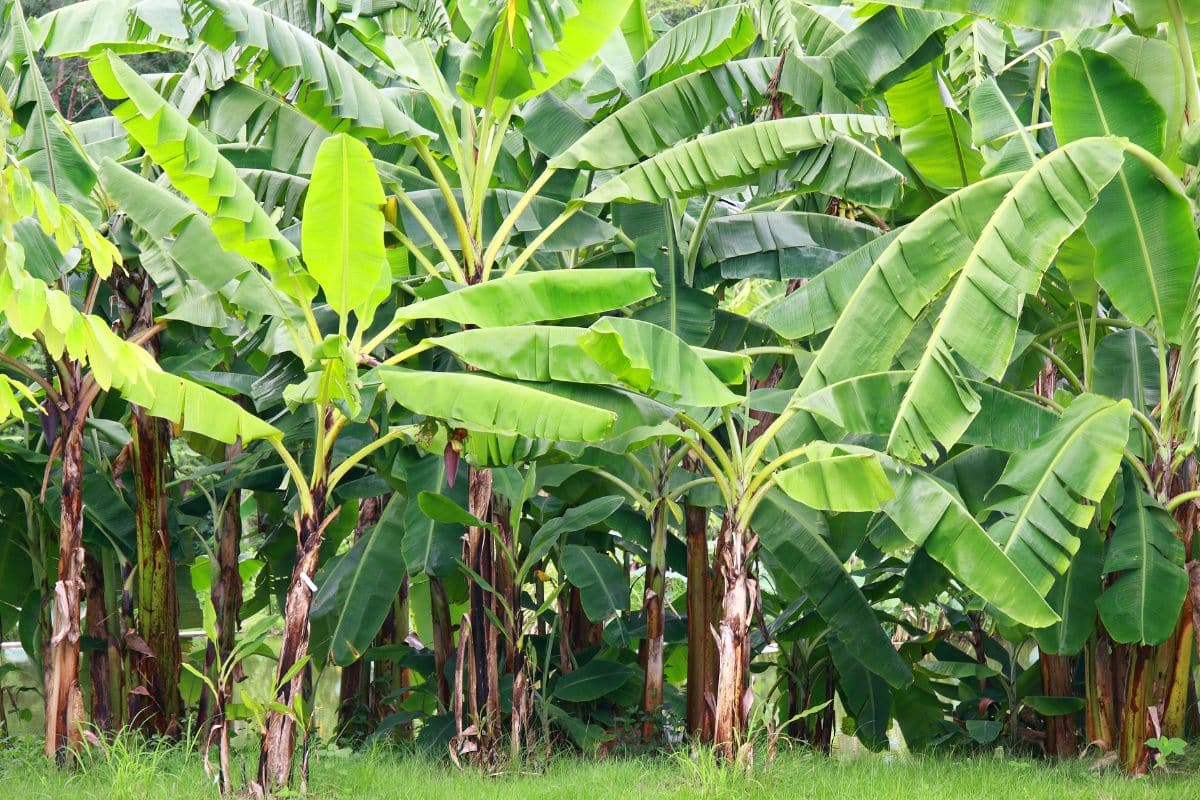Coffee grounds have become increasingly popular among gardeners as a sustainable way to enrich soil and support plant growth. Many fruit tree enthusiasts wonder whether banana plants benefit from coffee grounds as a natural fertilizer. This tropical crop, which technically consists of herbaceous plants rather than traditional trees, requires specific nutritional conditions to thrive and produce abundant fruit.
The relationship between coffee grounds and banana plants involves understanding soil chemistry, nutrient requirements, and proper application methods. While coffee grounds contain valuable nutrients, their effectiveness depends on how you incorporate them into your gardening routine. Understanding these factors helps you make informed decisions about sustainable gardening practices for your banana plants.
Nutritional benefits of coffee grounds for banana plants
Coffee grounds provide several essential nutrients that banana plants actively require for healthy development. These grounds contain approximately 2% nitrogen, 0.3% phosphorus, and 0.3% potassium, creating a modest but beneficial nutrient profile. Nitrogen supports leaf growth and overall plant vigor, while phosphorus promotes root development and flower formation.
The organic matter in coffee grounds improves soil structure by enhancing water retention and drainage capabilities. This dual benefit proves particularly valuable for banana plants, which require consistently moist but well-draining soil conditions. The grounds also attract beneficial earthworms and microorganisms that further enrich the soil ecosystem.
Additionally, coffee grounds contain trace amounts of magnesium, calcium, and sulfur. These micronutrients support chlorophyll production and overall plant health. Magnesium deficiency often causes yellowing leaves in banana plants, making coffee grounds a useful preventive measure when applied correctly.
However, fresh coffee grounds possess acidic properties that may not suit all soil conditions. Most banana varieties prefer slightly acidic to neutral soil with pH levels between 5.5 and 7.0. Testing your soil before application ensures optimal growing conditions for your plants.
Proper application methods for banana plant fertilization
Successful coffee ground application requires strategic timing and preparation to maximize benefits while avoiding potential drawbacks. Fresh coffee grounds should undergo composting or aging before direct soil application. This process reduces acidity levels and prevents potential nitrogen burning of plant roots.
Mix coffee grounds with other organic materials such as dried leaves, grass clippings, or kitchen scraps to create balanced compost. The ideal ratio combines one part coffee grounds with three parts carbon-rich materials. This mixture creates optimal conditions for decomposition while maintaining appropriate nutrient balance.
Apply the composted mixture around the base of banana plants, maintaining a 6-inch distance from the main pseudostem. Spread the material in a 2-3 inch layer, extending to the plant’s drip line where feeder roots actively absorb nutrients. Water thoroughly after application to help nutrients penetrate the root zone.
Seasonal application timing affects nutrient uptake efficiency. Apply coffee ground compost during active growing seasons when banana plants demonstrate increased metabolic activity. This typically occurs during spring and early summer in temperate climates, or at the beginning of rainy seasons in tropical regions.
Just as maintaining proper care for herb gardens requires attention to detail, banana plants benefit from consistent but moderate fertilization schedules throughout their growing cycle.
Soil pH considerations and coffee ground effects
Understanding soil pH dynamics becomes crucial when incorporating coffee grounds into banana cultivation. Fresh coffee grounds typically measure between 6.5 and 6.8 on the pH scale, which falls within the acceptable range for most banana varieties. However, the brewing process and ground age can influence these measurements significantly.
Decomposing coffee grounds may temporarily lower soil pH as organic acids release during breakdown. This acidification process usually stabilizes within several weeks, returning soil to neutral or slightly acidic conditions. Regular soil testing helps monitor these changes and prevents excessive acidification that could harm plant growth.
Banana plants demonstrate remarkable adaptability to various soil conditions, but extreme pH levels can restrict nutrient availability. Iron, manganese, and phosphorus become less accessible in highly alkaline soils, while aluminum toxicity increases in overly acidic conditions. Coffee grounds help maintain optimal pH balance when used appropriately.
Consider your regional soil characteristics before implementing coffee ground applications. Sandy soils drain quickly and may require more frequent applications, while clay soils retain nutrients longer but need improved drainage. Coffee grounds address both scenarios by adding organic matter that enhances soil structure.
Similar to how fruit trees respond to coffee ground applications, banana plants benefit from gradual nutrient release rather than concentrated doses that may overwhelm their root systems.
Alternative organic fertilizers and companion planting strategies
While coffee grounds offer valuable benefits, diversifying your fertilization approach creates more robust growing conditions for banana plants. Combining multiple organic amendments provides comprehensive nutrition that single-source fertilizers cannot match. Wood ash, compost tea, and aged manure complement coffee grounds effectively.
Companion planting enhances banana cultivation by creating beneficial plant communities. Consider these effective companion plants for banana gardens :
- Sweet potato vines for ground cover and additional nutrition
- Leguminous plants like beans that fix atmospheric nitrogen
- Aromatic herbs such as lemongrass that deter harmful insects
- Comfrey for dynamic accumulation of soil nutrients
Understanding companion planting principles helps create synergistic relationships between different plant species, maximizing garden productivity and soil health.
Organic mulching with materials beyond coffee grounds provides additional benefits. Banana leaves, grass clippings, and shredded bark create protective layers that conserve moisture and suppress weeds. These materials decompose gradually, contributing to long-term soil improvement.
Integrated pest management becomes easier with diverse organic practices. Natural pest control methods work more effectively when plants receive balanced nutrition and grow in healthy soil ecosystems.
Success with banana cultivation requires patience and consistent care, much like establishing productive vegetable gardens. Coffee grounds represent one valuable tool in a comprehensive organic gardening strategy that supports sustainable fruit production.

